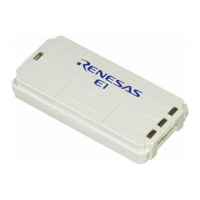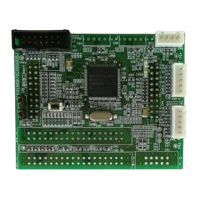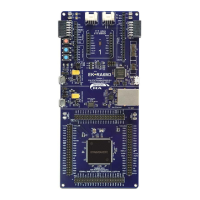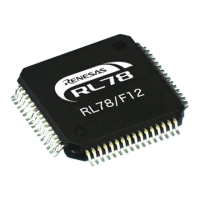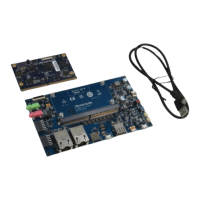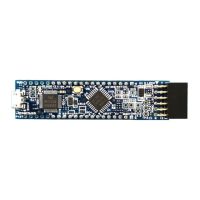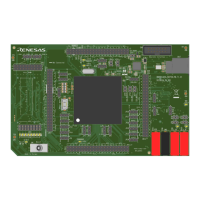2
2-10
32180 Group User’s Manual (Rev.1.0)
CPU
2.6 Data Formats
Bit endian
(H'01)
Byte endian
(H'01234567)
Big endian
Little endian
Note: • Even when bits are arranged in big endian, H'01 is not B'10000000.
HH HL LH LL
H'01
H'23 H'45
H'67
LL LH HL HH
H'67
H'45 H'23 H'01
B'0000001
b0 b7
B'0000001
b7 b0
Figure 2.6.4 General Endian System
(2) Data formats in memory
The data sizes in memory can be byte (8 bits), halfword (16 bits) or word (32 bits). Although byte data can
be located at any address, halfword and word data must be located at the addresses aligned with a
halfword boundary (least significant address bit = "0") or a word boundary (two low-order address bits =
"00"), respectively. If an attempt is made to access memory data that overlaps the halfword or word bound-
ary, an address exception occurs.
Figure 2.6.3 Data Formats in Memory
(3) Endian
The diagrams below show a general endian system and the endian adopted for the M32R family of
Mitsubishi microcomputers.
Address
Byte
Halfword
Word
+0 address +1 address +2 address +3 address
b0 b31
Byte
Byte
Byte
Byte
Halfword
Halfword
Word
7 8 15 16 23 24
b0
15
b0 b31
b31
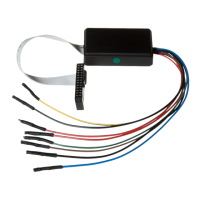
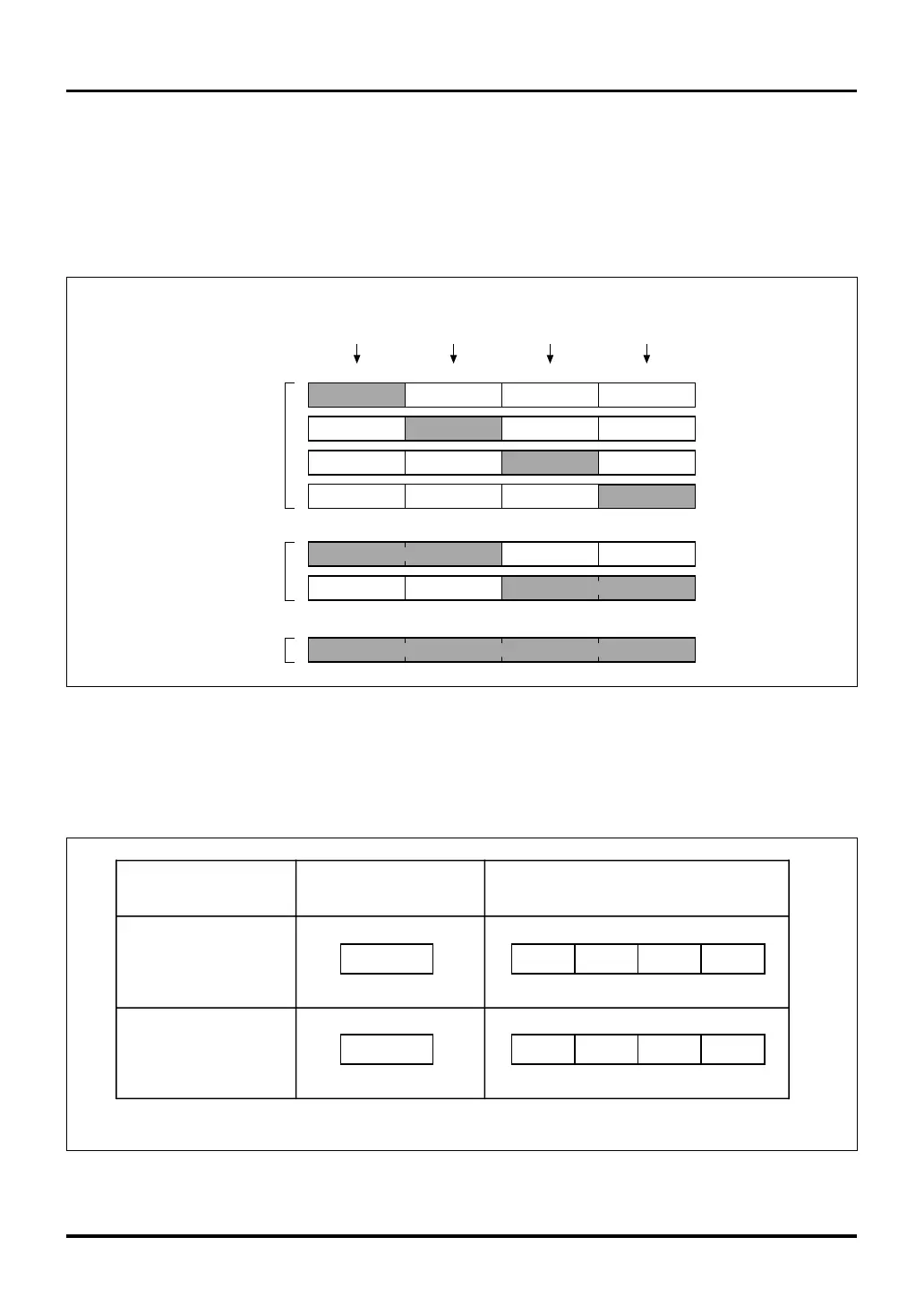